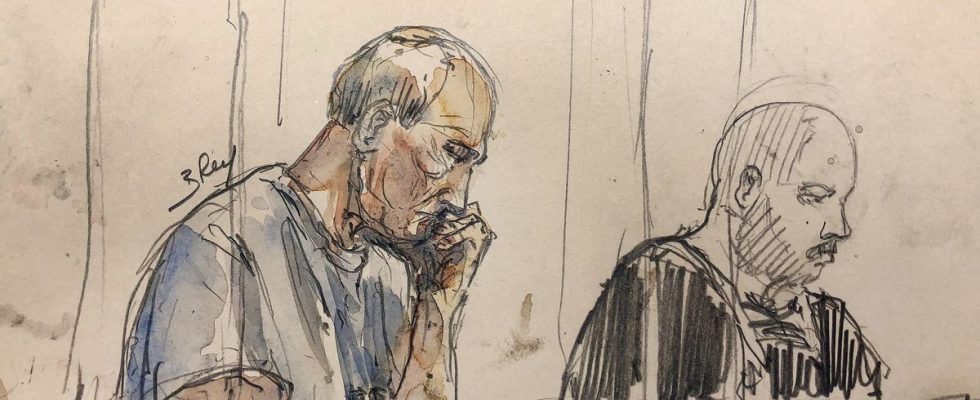So, premeditation or not on the part of Jean-Marc Reiser? The question was again at the heart of the appeal trial of the man who is being prosecuted for the murder of Sophie Le Tan in 2018 in Schiltigheim, near Strasbourg.
For commissioner Sarah Jammet, the assassination of the 20-year-old student is not in doubt. The person in charge of the investigation delivered to Colmar this Thursday a precise and argued account of the facts alleged against Jean-Marc Reiser, giving the impression that she mastered this sprawling file, rich in 12,790 pieces. For an hour and a half, she exposed the maneuvers of this cold and imposing 62-year-old man, who, concentrated in his box, does not miss a word of the presentation: he knows that part of his judicial future is at stake in this statement.
“He worked out a real scheme”, underlines Commissioner Jammet, first telling how the accused worked out his “trap” and published, under false identities, three real estate advertisements for the rental of a small apartment in Schiltigheim, in the suburbs of Strasbourg, using a photo taken at his mother’s to illustrate it.
She explains that these announcements referred to telephone numbers which were not Jean-Marc Reiser’s official contact details, but “hidden” lines, opened under false names with an operator “who does not verify identities” of its customers. Five lines were thus used for exchanges with potential rental candidates. Of the 182 people recontacted, 175 are women.
Binoculars seized from his apartment
In the end, ten appointments will be fixed for visits, only with women. “He made sure that they would come alone, otherwise he would cancel or not honor the appointment,” explains Sarah Jammet. The meeting place is each time outside, not far from the building, in places “that he could observe from the kitchen window”, to ensure the absence of an accompanying person, points to the commissioner. Binoculars were also seized in the apartment.
She tells how, in the days preceding the disappearance of the young woman, Jean-Marc Reiser “goes several times to the area” where the body of his victim will be found a year later. She also quotes a testimony to say how, two days before the fatal appointment, he “changed his appearance” by bleaching his hair. The demonstration works. For this work of investigation, the commissioner receives the congratulations of the lawyers of the civil part, then of the general counsel, who have no questions to formulate.
The defense responds
Then comes the turn of the defense, provided in turn by Master Thomas Steinmetz and Master Emmanuel Spano. They reveal that the “change in appearance” of Jean-Marc Reiser, his dye, actually dates back to several days before the first exchanges of SMS with Sophie Le Tan.
On possible locations of a site to get rid of a body, Me Emmanuel Spano is categorical: “Telephony excludes this hypothesis”, the accused had not gone there the days preceding the meeting fatal. “Jean-Marc Reiser had a perfect knowledge of the sector”, retorts the commissioner, on the defensive, in reference to an internship carried out years earlier by the accused with the National Forestry Office.
Me Spano then evokes the imposing tree which obstructs the view from the apartment of the accused and prevents the control of the comings and goings. “We never said that he controlled arrivals at his appointments,” continues the commissioner, somewhat destabilized. “I’m glad to hear you say that,” replied the defense attorney.
Me Spano ends by evoking his client’s travel plan. Where the prosecution sees only the preparation of an escape, reminds him of Mr. Reiser’s old desire to sublet his apartment during a trip. “We exclude hypotheses, we don’t check, and then we are told that it is not true”, he annoys. “But the burden of proof is on the prosecution. »

